
13 minute read
Human interaction
from TWSM#1
Internal communication Without gerarchy
MR FRANK ABBENHUIJS from Human Resources in Microsoft, Western Europe, discusses the modern workplace where creativity is the outcome of people’s innate capacity to interact and collaborate, with communication technologies working to enhance networks of trust.
Advertisement
Human interaction
“Microsoft’s mission is to enable people and businesses throughout the world to realize their full potential. It is not just only about technology but about people working together,” says Frank Abbenhuijs, Senior Hr Director for Western Europe, Microsoft. In Microsoft’s vision of the world of work, creativity is the result of asynchronous interaction without the necessary formalities of old. These may range from meeting face to face over coffee to multimedia conferencing over multiple time-zones and continents using the tools that are now familiar to everyone, including MSN Messenger or Windows Mobile powered devices. “The workplace of the past as defined by hierarchy, rules and directive from the top is rapidly disappearing. The workplace nowadays is not a fixed office, but rather a porous node within multiple networks of exchange and collaboration which telecommunication technologies can facilitate and enhance,” Abbenhuijs further adds. From the Microsoft perspective, human interaction and collaboration fused
People working together in Microsoft.
with telecommunication technologies is, however, not enough on their own. “Trust is at the base of every kind of activity and does not come automatically. Trust has to be invested in and earned. Relying on the character, ability, strength or reputation of another human being is something that requires time and only strengthens with the experience of working together.” With this in mind, Microsoft is driven to create inspiring environs in which its technologies are seamlessly integrated, and where people can proactively participate from any time or place. Abenhuijs is at pains to point out that even for Microsoft, innovation is not just about better communication technologies. “Microsoft’s HR Directors meet two to three times a year to discuss business as well as to undertake teambuilding. We have also adapted social innovations from the world of speed dating where people discuss one-to-one about specific topics, switching partners every thirty minutes. This is one way that people can communicate directly with each other and where hierarchy is flattened by eliminating information gatekeepers,” concludes Abbenhuijs. •
Communications Corporate films
By MARCO DELLA FONTE
COMMUNICATION Over the years, communication’s terms and standards have changed. Today everything is faster, briefer and more concise. Also in the world of the corporate documentary, or industrial movie, the approach to communicating the firms’ potential has also totally changed: from the 60 minutes movie to the 3 minutes ‘web oriented’ message.
YouTube era
Today everything is quick, synthetic and offhanded…and creative. The internet has encouraged change in the production and fruition of company documentaries. This article is a brief insight starting from the outset of industrial films, the so-called products that companies divulge to reveal themselves, right up to the topicality of YouTube. In the past six years, the way we think, the way we produce and disseminate this communication tool, has radically changed. Timing has changed thanks to rapid internet connections which cast down each rind and go straight to the point. If industrial films were once an opportunity for companies to show-off at trade fairs or before conferences, what they only need now is a click to start the show.
THE OUTSET In the fifties the industry started its path of visual communication by involving authors, cinema masters and intellectuals. The beginning of promotional films was characterised both by an economic aspect, expedient to companies, and by a real testing of arts cinema. In Italy, many film directors ventured into this new challenge. Amongst these : Ermanno Olmi with “La diga sul ghiacciaio, La pattuglia del Passo San Giacomo” with the script written by Pier Paolo Pasolini ; Michelangelo Antonioni with “Sette canne, un vestito” and Luciano Emmer with “Il pianeta acciaio” with the script written by Dino Buzzanti. In the rest of the world similar dynamics were carried out. In the 8o’s Martin Scorsese produced a short film for an Armani perfume and Wim Wenders for designer Yamamoto with the film Tokyo Ga. These artistic collaborations show how business cinema has always been focused on high quality products both in terms of fulfillment and in terms of communication style.
TODAY Cinematic products attained by companies have conformed themselves to new sensorial and emotional faculties: speed, synthesis and spectacularization. Fruition times have changed with the new Web language: just a few minutes (at times seconds) are enough compared to the half hours needed in the past. Messages are more fragmented, brief and abstract but definitely more creative and visually engaging. In order to understand this context one must be sensitive to a new visual and creative mentality .Prejudice would be the worst weapon to pollute a process which is by now irreversible. The internet, YouTube and the fad of viral communication, now drive every creative expression.
TWO POINTS OF VIEW IN TERMS OF CREATIVITY AND CONTEXT From a content point of view, current affairs show companies inspired by their own philosophy and others by their products. What we see from one angle is an emotional approach whereas from another, a functional, product driven one. Some fulfill an idea, a film, a documentary based on a corporate philosophy, involving authors and writers to build transversal and indirect adverts. He who represents a product shows the company’s technical and productive potentials through a process of visual propaganda. •
The internet, YouTube and the fad of viral communication, now drive every creative expression. From a content point of view current affairs show companies inspired by their own philosophy and others by their products.


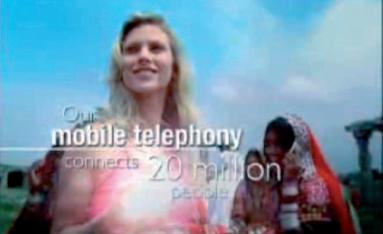


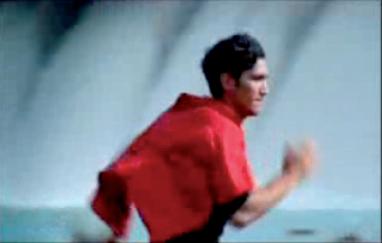




Tips to make a corporate video get noticed, borrowed from 25 years experienced director Thomas Clifford
Director’s cut
1. Tell a story, don’t talk about your corporate numbers. There is Excel for that 2. When making your video, just think of the person in front of the tube 3. A powerful story is timeless; magical; doesn’t get stale 4. People know a lie when they see one 5. Hire the most qualified producer and director you can 6. Emotional, energetic, enthusiastic, engaging 7. Let your customers tell the world how great you are 8. Capture some fun and playfulness of the company 9. Every 30 seconds change your pace, rhythm, content 10. Find your heroes. When given the chance, employees want to tell their story Virals on the net
Corporate film by the Aditya Birla Group A US $29.2 billion corporation, the Aditya Birla Group is in the league of Fortune 500. It is anchored by an extraordinary force of 130,000 employees, belonging to 30 different nationalities. In India, the Group has been judged “The Best Employer in India and among the top 20 in Asia” by the Hewitt-Economic Times and Wall Street Journal Study 2007. Over 50 per cent of its revenues flow from its overseas operations.
Samsun Viral Virals are marketing techniques that use preexisting social networks to produce increased brand awareness or to achieve other marketing objectives through self-replicating viral processes. It can be word-of-mouth delivered or enhanced by the network effects of the Internet. By creating exciting and unusual content, companies influence consumer buying worldwide through subversive brand awareness. A successful viral campaign hinges on great creative. It relies on transforming a marketing brief into content so engaging that it helps forge a lasting or intense relationship between brand and audience. The art of creating viral content is about knowing the difference between a good idea and an idea that’s likely to become viral. The technique of producing a successful viral marketing campaign is both an art and a science. Each project requires a delicate balance of intuition and analytics. The trend towards using real content for advertising purposes is very strong in viral marketing-content that engages the target audience, and that which they will share with others to maintain or extend their social networks. A recent example was a campaign around a disappearing camera trick using a new Samsung camera that was created by The Viral Factory. Using Youtube and the camera itself, a challenge went out to find viewers who were able to explain the trick.
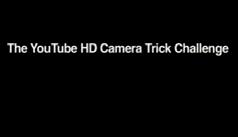

Data transfer The state of the art
THE RESEARCH In a global economy, the flow of information has no frontiers and this has become a major issue at all levels. Twsm investigates the sensitivities surrounding the use of employees’ personal data where workplaces often transcend national borders.
Dangerous indiscretions
According to the Ilo 1996 Code of practice, ‘the gathering of a large number of data and the many different uses to which they are put multiply the risk of false or misunderstood information, permit close monitoring of the persons concerned and intensify tendencies to influence or manipulate their behaviour’. Workers today risk losing control on their data and; in short, their dignity is at stake. According to Ilo general principles, data subject that is those who are identified by the data, are entitled to control the use of this personal information. Such right of control has been required through laws on obligatory transparency and the right of data subjects to express their consent. Employers, however, do not have to collect their workers’ consent if such information is for the purpose of managing employment processes (see table n.1). In any case, employers must still inform their workers upon such collections, including the type of data gathered, its mode of internal and external communication, and the rights to which they are entitled. The workers right to be informed includes right to access the data relating to them. By exercising the right to personal data the employee can ascertain the accuracy of information. In a global economy, however, the flow of information encompassing workers’ personal data has no frontier. Most companies have transnational operations based upon information freely transferred across borders. The management of a multinational company’s human resources is probably one of the best examples of the need for a binding corporate rules approach.
BINDING CORPORATE RULES The flow of personal data to countries outside the European Union, can, however, result in a circumvention of the relevant Eu directive through the establishment of offshore data havens. To prevent this, the Directive states that such transfers, including that between two companies within the same group, can take place only if the third countries ensure an ‘adequate’ level of protection (see table n.2).
EXEMPTIONS APPLY TO The contractual exemption, where employer and workers have entered into a contract and the transfer of data is necessary for the contract’s performance, does not apply to intercompany transfer of workers’ data (see table n.3). In this case, the intercompany data transaction, besides the trans-border issue, represents a communication of personal data, subject to the worker’s explicit consent. Under the Directive, in the absence of consent, these transfers are legitimate where the employer can guarantee adequate protection of privacy by entering into appropriate contractual provisions with the recipient of the data. The management of a multinational company’s human resources is probably one of the best examples of the need for a ‘binding corporate rules’ approach (see table n.4). Corporate policies covering this subject matter, signed by both corporations, can be taken as ‘binding corporate rules’ and the obligations to safeguard the workers’ privacy must be subject to scrutiny with the relevant data protection authorities. A contractual instrument can be the best solution for adapting data-protection regulations to specific aspects of employment relationship, and to respect the personal privacy and dignity of workers in enterprises. •


By ROSARIO IMPERIALI
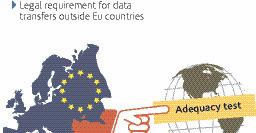
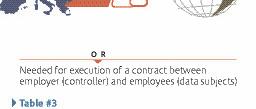
Data protection International instruments
International instruments for worker protection include the Council of Europe’s 1981 Convention for the Protection of Individuals with regard to Automatic Processing of Personal Data, the Oecd’s 1980 Guidelines on the Protection of Privacy and Transborder Flows of Personal Data, and the 1995 European Union Directive on the protection of individuals with regard to the processing of personal data. There are also international agreements such as Recommendation No. R(89)2 of the Council of Europe on the protection of personal data used for employment purposes. This outlines internationally accepted principles on data protection in the field of employment.

Rosario Imperiali, gained professional experience at Ibm, is a columnist on Il Sole 24 Ore and he has authored several data protection manuals. At the moment he is a member of the European Privacy Association Committee.
Principles and values Tnt responsibility

Tnt and Abb aim to transform company and employee principles and values towards working for effective social action. They aim to build strong company reputations through better dialogue with the community. The notion of reputation is very relevant to systems where there is information asymmetry about quality and trust. An investment in reputation provides an incentive for firms to behave in a socially responsible way.
01 PRINCIPLES AND VALUES Tnt Express is a global express services company delivering 4.4 millions packages and letters every week in over 200 countries.

The road to corporate social responsibility
Making its impact with more than 26,760 vehicles and 47 planes Tnt needed to adopt corporate social responsibility if it wanted the continued support of its customer base, stakeholders and its more than 163,000 employees. “Being socially responsible is our Group mission and is part of Tnt’s reference values”, says Stefania Lallai, Communication and Csr Manager of Tnt Express Italy. “Italy is the first mover in Csr within the Group and we have made commitments to cement these values into our daily workplace.” To facilitate this interaction, Tnt runs a series of projects based on respect and dialogue with the surrounding community, and has allocated resources and people working full time to make these happen. An example is ‘Moving the World’, an initiative that partners with the Un World Food Program (Wfp), and ‘Planet Me’ which aims to reduce harmful emissions generated by the global transport giant. Tnt Ceo Peter Bakker signed an Mou with former Wfp Executive Director James Morris at the World Summit in December 2002 and both parties committed to a minimum of five years for the partnership. In this partnership, Tnt offers four forms of support to the Wfp, including knowledge transfer, hands-on support in emergency operations, awareness and fundraising, and the transport of goods. Furthermore, what was essential was support from the highest levels of management for the partnership.
TRANSFERRING VALUES Commitment to Csr needs to start from within the Company. Tnt’s ambition is for its people to have a competitive advantage, and for Tnt Express to become recognised as a preferred employer within the transport industry. To create a competitive advantage from within, the company is developing its people through satisfaction, pride and social engagement. This in turn strengthens the firm’s core competencies. “The gradual enlargement of Tnt commitment to Csr is directly proportional to the level of attention and involvement of its employees” observes Stefania Lallai. “For example during the recent (April 2009) earthquake in Italy, our staff from all over Italy, absolutely and spontaneously, organized a collection of daily necessities, in coordination with the Civil Defence authorities. They collected 200 cubic meters of material in one day, outside of working hours, with perfect • coordination between drivers and operations employees”.









